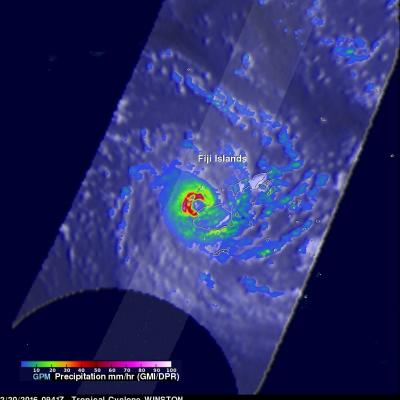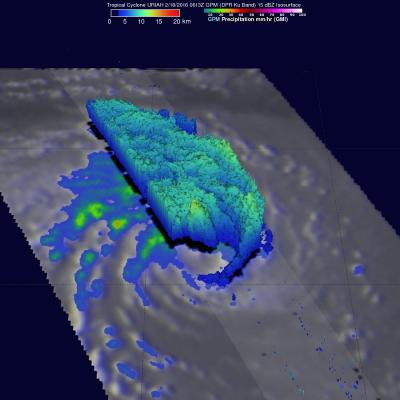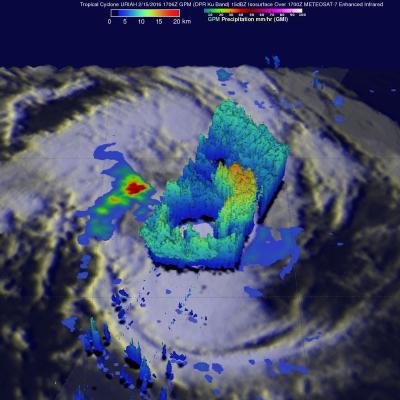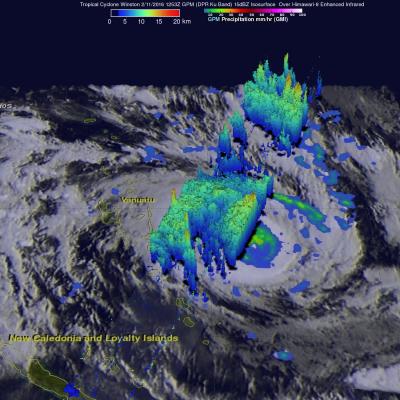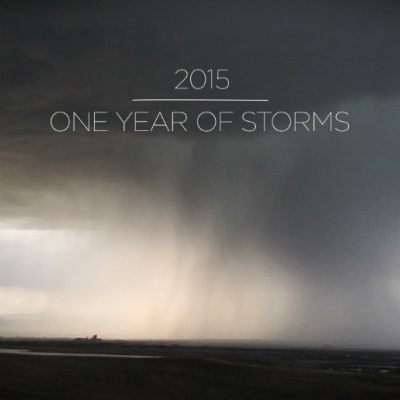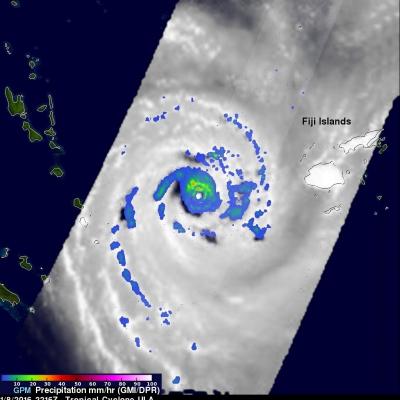Tropical Cyclone Winston Hits Fiji
The GPM core observatory satellite flew directly above tropical cyclone Winston on February 20, 2016 at 0941 UTC. Tropical cyclone Winston had sustained winds estimated at 155 kts (178 mph) at that time. A rainfall analysis derived from data collected by GPM's Microwave Imager (GMI) and Dual-frequency Precipitation Radar (DPR) instruments found that in addition to powerful winds Winston was dropping rain at a rate of over 169 mm (6.7 inches) per hour in the western side of the eye. Tropical cyclone WINSTON is the most powerful storm to hit Fiji. At least one fatality has already occurred. The


